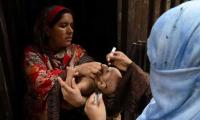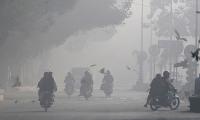President Trump is planning on a trip to India — probably next month, depending on his impeachment trial in the Senate. That will be almost exactly 20 years after President Clinton’s pathbreaking trip to India, Bangladesh, and Pakistan in March 2000. There are some interesting lessons to be learned from looking back, writes Bruce Reidel for The Brookings Institution’s blog.
Presidential travel to South Asia began with President Eisenhower in 1959, the first-ever voyage by Air Force One. Ike also visited Afghanistan and Pakistan. Jacky Kennedy visited India and Pakistan as first lady, as well. But it was not a frequent occurrence.
After President Carter visited New Delhi in 1978, almost a quarter-century went by with no presidential travel to India — until Clinton’s trip. Clinton spent five days in India and did a day trip to Bangladesh from New Delhi, the only US president ever to visit the capital of Dhaka.
The visit to India ended a turbulent period in America’s relationship with India following the Indian nuclear weapons tests in 1998. It also followed Clinton’s intervention in the 1999 Kargil War between India and Pakistan, which threatened to go nuclear. Clinton persuaded Pakistani Prime Minister Nawaz Sharif to withdraw his troops from territory seized by Pakistan in the spring of 1999.
After Sharif backed down — something Clinton arranged in a summit at Blair House on July 4, 1999 — he was ousted in a military coup by General Pervez Musharraf. All American assistance to Pakistan was suspended.
Indian Prime Minister Atal Bihari Vajpayee welcomed Clinton’s pressure on Islamabad . It was the first time that an American president openly sided with India against Pakistan in wartime. Before Clinton’s trip, the American intelligence community offered a chilling estimate: that the chance of a full-scale war between the two nuclear weapons powers was fifty-fifty in the next decade.
Clinton insisted on also visiting Pakistan on the trip. He believed adamantly that a stop in Islamabad was essential to keeping engagement with Pakistan alive. Not going would send a message that Washington had given up on Pakistan.
There was considerable resistance in the administration, with some arguing that it would give Musharraf’s military dictatorship a degree of legitimacy. Sharif was still in prison in Pakistan.
Pakistan was the principle patron of the Taliban regime in Afghanistan, which hosted al-Qaida and Osama bin Laden, and which had already attacked two U.S. embassies in Africa. Others worried it would sour the good will in India (it didn’t).
The Secret Service was very worried about the president’s security in Pakistan. We had reliable reporting that al-Qaida was targeting President Clinton. Part of the trip to Bangladesh was cancelled due to reports of a plot to assassinate him in the countryside, and the airport in Dhaka was on high alert during the visit. Pakistan would be even more dangerous, given the deep presence of the terrorist group and its sympathizers there.
In the end, Clinton flew to Islamabad in a small, unmarked jet. The pilot reported alarming heat signatures below the plane at one point in the flight, which had us all spooked. The meeting between Clinton and Musharraf reached no decisions, except that Sharif should not be executed. (Subsequently, I would work with his ambassador in Washington on Sharif’s future.)
The visit lasted only a few hours, and from there, Clinton flew to Oman, where he met Sultan Qaboos and rejoined his usual jet for the ride home.
The current administration has made no mention of visiting Pakistan. Trump sidestepped the question of going to Pakistan when he met Imran Khan in Davos, instead praising the relationship as the best ever between the two countries. The Pakistanis are central to any negotiations about the future of Afghanistan and the Taliban, which has retained close ties to the Pakistani intelligence service all these years. The Taliban’s senior leadership lives in Pakistan, and they have sanctuaries for training and equipping their fighters in the borderlands with Afghanistan.
Prime Minister Imran Khan had a successful visit to Washington last July. Washington abandoned the harsh rhetoric about Pakistan that had characterized the administration’s position in its first two years. A presidential visit to Pakistan might facilitate the negotiations with the Taliban in Qatar.
There has been a strong bipartisan consensus in favour of close ties with India. Prime Minister Narendra Modi’s tough position on Kashmir and Muslim rights has raised important concerns about the direction he is taking the republic.
A visit by President Trump will be an opportunity to underscore concerns about the issues. Unfortunately, it is probably not the kind of issue this administration is concerned about. If the president’s team decides to add Pakistan to the trip, it will hear an earful — that’s probably a good thing.
Kidney-related diseases rank as the 12th leading cause of death in Pakistan
Officials say section 144 of CrPC is imposed on a request from the additional inspector general due to security concerns
Neither PPP joined federal government nor any expansion was made, hence several ministries deprived of ministers
Air quality index of Karachi surpasses 300 during winter
If government wants meaningful results it should reduce electricity rates under the winter package
"We appreciate Spain’s support in achieving GSP Plus status and highly value our friendly ties," says Punjab CM







